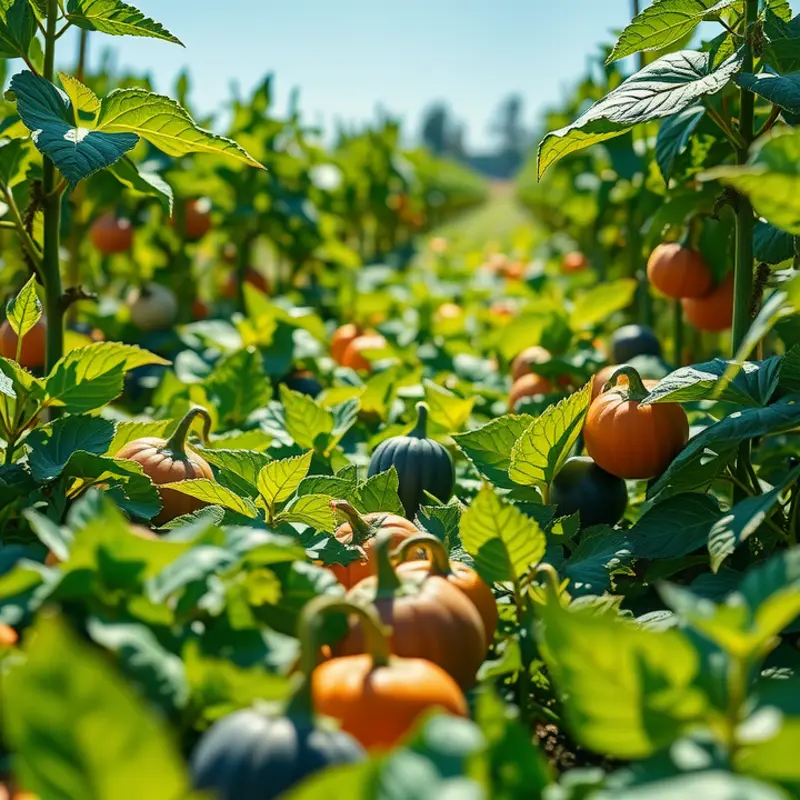Condiments, often perceived as mere accompaniments, are repositories of culture, history, and identity. From the spicy sriracha of Southeast Asia to the tangy chimichurri of Argentina, each condiment tells a story of local flavors and culinary traditions. Understanding these flavors enriches our culinary experiences and connects us to the diverse cultures they emerge from.
Spice, Aroma, and Identity: The World of Fermented and Spicy Condiments

Fermented and spicy condiments play a significant role in culinary traditions worldwide. They not only enhance the flavor of dishes but also highlight the cultural identities of the communities that use them. These condiments weave stories of adaptation, migration, and tradition, offering a sensory experience that is both universal and deeply personal.
Kimchi, a staple in Korean cuisine, serves as a prime example. This fermented vegetable dish, most commonly made with napa cabbage, traces its roots back over a thousand years. The fermentation process not only introduces a tangy, pungent flavor but also effectively preserves the vegetables through Korea’s harsh winters. Kimchi is emblematic of Korean identity, representing resilience and ingenuity. Its importance is reflected in Korean idioms, for instance “chop kimchi” or “cut the kimchi,” which holds a deeper cultural implication for fair distribution and cooperation within a group.
Meanwhile, harissa, a fiery North African chili paste, tells a different story. Originating from Tunisia, harissa contains a blend of hot peppers, garlic, olive oil, and aromatic spices. Its intense heat and complex layers of flavor speak to the history of trade routes and the mingling of different cultures in the Mediterranean. Harissa not only flavors dishes but also stands as a culinary symbol of North African heritage. It is often used to flavor meats or as a base for stews, where the vibrant red hue and spicy aroma make it unmistakable.
In Southeast Asia, sambal acts as a culinary cornerstone, capturing the fiery palate of the region. Typically made with chili peppers, shrimp paste, and lime juice, sambal showcases the abundant local produce and defines the dynamic flavors of Indonesian, Malaysian, and Singaporean cuisines. Each family, village, and restaurant has its sambal variation, reflecting personal tastes and local ingredients. The communal preparation and sharing of sambal reflect the region’s social and familial bonds.
These examples illustrate how fermented and spicy condiments are more than mere accompaniments; they are cultural cornerstones. They speak to the geography, history, and climate of their origins, offering an edible chronicle of their journey through time. These condiments also provide health benefits through fermentation, like probiotics that aid digestion. The non-dairy nature of many fermented condiments, such as kimchi and sambal, highlights a universal aspect of fermentation across diverse cultures. For those interested in exploring non-dairy fermentation, this guide to non-dairy probiotics offers valuable insights.
In every bite, these condiments create a dialogue between the past and present, serving as bridges across time and space. Their flavors invite us to explore not just the taste but also the essence of the cultures they represent. As we savor the heat and complexity of these condiments, we partake in a shared human heritage, celebrating the diverse tapestry of global food culture.
Cultural Significance: How Condiments Unite and Define Communities

Condiments are more than just an accompaniment; they are cultural cornerstones, binding communities through shared tastes and traditions. Exploring how salsa in Mexico, tzatziki in Greece, and achaar in India highlight these roles provides a window into the vibrant social fabric these flavors enhance.
In Mexico, salsa is not merely a blend of tomatoes, chili, and spices. It embodies the communal spirit of Mexican gastronomy, stemming from the ancient Aztec and Mayan civilizations. Salsa graces every table, from festive gatherings to humble family dinners, providing a sense of continuity and belonging. The act of making salsa itself can be communal, with families passing down secret recipes through generations. Whether atop tacos or alongside grilled meats, salsa serves as a unifier across the nation, bringing people together through its versatile applications and familiar taste.
Across the globe, in Greece, tzatziki holds a similar place. Crafted with yogurt, cucumber, and garlic, tzatziki is a staple at Greek gatherings and celebrations. Its creamy texture is a delightful contrast to grilled meats and savory breads, making it a frequent companion to numerous dishes. During religious festivals and family milestones, tzatziki offers a familiar comfort, bridging the gap between modern palates and traditional values. Its ever-refreshing presence symbolizes a link to the pastoral landscapes and rich culinary history of Greece.
In India, achaar acts as a cultural ambassador on the dining table. These pickles, crafted from fruits and vegetables, soaked in spices, vary widely across regional cuisines. Achaar is integral to the Indian meal experience, adding a burst of flavor to staples like rice and bread. Different communities have their unique achaar traditions, strengthening regional identities while uniting people through a shared penchant for bold tastes. This condiment is more than just a tangy appetizer; it represents the essence of Indian harmony in diversity.
These condiments also reinforce social bonds during rituals and celebrations. Salsa may spice up a family fiesta, tzatziki finds its place in a Greek wedding feast, and achaar enlivens a sumptuous Indian festival. Each condiment carries stories of past generations and personal anecdotes, revealing the emotional ties tied to every taste.
Furthermore, the making and sharing of these condiments are acts of love and hospitality. They invite participation, where family members gather to chop, stir, and season together. By decoding the importance of condiments, we unearth the tapestry of human connections they create. They are flavorful markers of community identity, bringing comfort and cohesion with every aromatic bite.
For those curious about incorporating such global flavors into everyday meals, consider the guidance on safer storage of sauces to preserve these culinary delights safely, fostering a sustainable connection with world cultures through the kitchen.
Final words
Condiments are more than mere flavor enhancers; they embody the essence of cultural heritage, community, and tradition. From fermentation to fresh herb blends, each condiment reflects the identity of its region and people. As food enthusiasts, understanding these rich stories allows us to appreciate the diverse culinary landscape of the world. Next time you reach for a condiment, consider the heritage and journey it represents, transforming a simple meal into a tapestry of global flavors.








